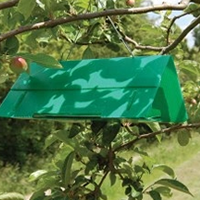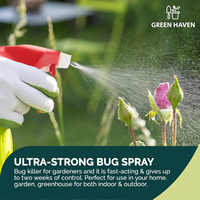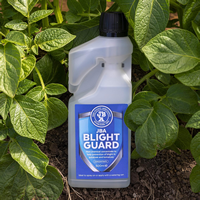Dendrobium Orchids. How to grow and growing advice.
Dendrobium Orchids are mainly evergreen with long stem-like pseudo bulbs. The foliage is normally elongated, and lance shaped.
It is a wide range of species, with many hybrids bearing flowers spikes in many colours. They are easy to grow, but sometimes a little bit slow to re-flower unless given the right growing conditions.
Dendrobium Orchids prefer the cooler climate, are epiphytic, and are well suited to growing on old trunks or bark backgrounds. They are also happy in orchid pots or baskets, but bear in mind that some of the hybrids can have stems up to 12in and more long. They should be supported by tying loosely to the frame or wires of the basket. This will also be true of some of the long flower racemes, which will arch over unless supported.
They are spectacular with the arching flowers if grown on a large enough log or bark slab. The same is true if the plants are basket planted and hung up. (There are also shorter growing Dendrobiums which will require no support.)
Dappled shade with humid conditions are required from early spring until late summer. Through the winter ensure full light.
They should be watered freely - providing the excess water can run off. Maybe not suitable for growing in a conservatory for this reason!
If grown in baskets, they will benefit from a week feed every week or so throughout spring/summer.
Do not over-pot into large containers, as they fare better in a restricted basket or pot. Neither do they like being disturbed once planted. As they 'overflow' their container after a few years, they can be divided (cut) and re-potted to obtain further plants. Apply special orchid fertiliser in growing season.
Pests Diseases and Problems
Mealy bug, Red Spider and Aphids can be problem pests.
Growing Orchids - General Article : x Ascocenda Orchids : Oncidium Orchids : Vanda Orchids
A Complete Guide to Planting, Pruning, Growing and Caring for a Dendrobium Orchids
Introduction
Welcome to the world of Dendrobium Orchids! Pruning these exotic plants is an important part of their growth and care. With the right pruning techniques, you can ensure that your Dendrobium Orchids thrive and bloom year after year. In this guide, we'll take a look at the basics of planting, pruning, growing, and caring for Dendrobium Orchids. We'll explore the best pruning techniques, and how to keep your Dendrobium Orchids healthy and beautiful. With the right knowledge and care, you can create a stunning display of Dendrobium Orchids in your home or garden.
Soil Preparation and Temperature Needs for Dendrobium Orchids
When it comes to caring for Dendrobium Orchids, soil preparation and temperature needs are key. For optimal growth, the soil should be loose and well-draining. A mixture of bark, perlite, and peat moss can be used to create an ideal base for the orchid's roots.
Additionally, the temperature should remain between 65-75 degrees Fahrenheit. This will help the orchid thrive and encourage flower growth. Pruning is also important for Dendrobium Orchids. After the blooms have faded, it is important to remove the flower spike to encourage new growth and blooms. Pruning should be done carefully to ensure that the orchid's health is not compromised.
Types of Pots Best Suited for Dendrobium Orchids
When it comes to selecting the best type of pot for your Dendrobium Orchids, there are several factors to consider. The type of pot you choose will depend on the size of the orchid, the climate in which it will be grown, and the level of pruning that will be required. For larger orchids, a larger pot may be necessary to ensure proper root growth and drainage. For climates with more extreme temperatures, a pot with a higher insulation value may be needed to keep the orchid warm in the winter and cool in the summer.
Additionally, for orchids that require regular pruning, a pot with a wider base will provide more stability and support for the orchid. Selecting the right pot for your Dendrobium Orchid will help ensure that it thrives for years to come.
The Best Time of Year to Plant Dendrobium Orchids
The best time to plant Dendrobium orchids is in the late spring or early summer months. This is when the temperature and humidity levels are just right for these delicate plants to thrive. If you want to get the most out of your Dendrobium orchid, it’s important to prune them regularly. Pruning helps the plant to grow healthy and strong, so it’s important to take the time to do this. Make sure to prune at the right time, removing any dead or dying stems and leaves, and trimming away any excess growth. With proper pruning, your Dendrobium orchid will be blooming and flourishing in no time!
Caring for Dendrobium Orchids Throughout the Year
Caring for your dendrobium orchids throughout the year is essential for keeping them healthy and vibrant. Pruning your dendrobium orchids is an important part of their maintenance. Pruning helps to promote new growth and remove dead or damaged leaves and stems. When pruning, always use clean, sharp shears and cut just above a node, or the point where a stem branches off. This will help the plant to develop a strong, healthy structure.
Additionally, it is important to fertilize your dendrobium orchids regularly to ensure they have the nutrients they need to thrive. Choose a fertilizer specifically formulated for orchids and follow the manufacturer's instructions for proper application. With proper care and maintenance, your dendrobium orchids will flower and thrive for many years.
Pruning Techniques for Optimal Blooms
Pruning your Dendrobium Orchid is an important part of ensuring optimal blooms. Pruning should be done carefully and regularly, as it helps to promote healthy growth and encourages new blooms. Pruning a Dendrobium Orchid involves removing old, dead, or diseased stems and leaves, as well as any flowers that have already bloomed. This pruning process helps to keep the plant healthy and encourages new growth. It also helps to reduce the risk of diseases and pests. When pruning, it is important to use sharp, sterilized scissors or shears and to work from the top of the plant downwards. This will ensure that the plant is properly pruned and that the new growth is directed downwards. Pruning your Dendrobium Orchid regularly will help to ensure that it produces beautiful blooms for years to come.
A step-by-step guide on how to propagate Dendrobium Orchids
A Beginner's Guide to Propagating Dendrobium OrchidsDendrobium orchids are among the most diverse and common orchid varieties. They are relatively easy to propagate, especially by division. Here is a comprehensive guide to help you through the process.
Materials Needed:- Mature Dendrobium orchid
- Sharp, sterile pruning shears or knife
- New pots
- Orchid potting mix
- Rooting hormone (optional)
- 1. Choose the Right Time: The best time to propagate Dendrobium orchids is in spring after they have finished blooming.
- 2. Select a Suitable Orchid: Choose a healthy, mature Dendrobium orchid with several cane-like stems (pseudobulbs).
- 3. Remove the Orchid from its Pot: Carefully remove the orchid from its pot, trying not to damage the roots.
- 4. Divide the Orchid: Using a sharp, sterile tool, divide the orchid into sections, each with at least one pseudobulb and one new growth or "eye" (a small bump on the pseudobulb that will grow into a new plant).
- 5. Pot Up the Divisions: Pot up each division in a new pot with fresh orchid potting mix. You can dust the cut ends with rooting hormone first if you wish, although this isn't essential. Place the pot in a warm, bright location out of direct sunlight.
- 6. Water and Care for the New Plants: Water thoroughly, then allow the potting mix to dry out before watering again. Dendrobium orchids prefer to be kept on the drier side. Feed with a balanced orchid fertilizer every 2-3 weeks during the growing season.
Tips for Success:
- Potting Media: Dendrobium orchids prefer a well-draining potting mix, such as fir bark or sphagnum moss.
- Humidity: They thrive in high humidity. Place the pot on a tray of wet pebbles or use a humidifier to increase humidity levels.
- Light: Provide bright, indirect light. Too much direct sunlight can scorch the leaves.
- Temperature: These orchids prefer warm temperatures during the day (65-85°F or 18-29°C) and cooler temperatures at night (50-60°F or 10-15°C).
With patience and care, your new Dendrobium orchids should flourish and reward you with beautiful blooms!
Common Problems That New Gardeners Might Encounter
New gardeners may be intimidated by the prospect of pruning their Dendrobium Orchids. After all, it can be difficult to know when and how to prune without damaging the plant. Pruning Dendrobium Orchids is an important part of keeping them healthy and growing, but it can also be a daunting task. It's important to remember that pruning should be done with care and precision. When pruning, it's important to remove dead or damaged leaves and stems, as well as any excess growth. Additionally, pruning should be done in the early spring or late summer, as this is when the plant is most likely to benefit from the pruning. With patience and practice, pruning Dendrobium Orchids can be a rewarding experience.
Common Diseases and Pests of Dendrobium Orchids
Dendrobium Orchids, while beautiful, can be susceptible to various diseases and pests. Below is a list of common problems, their causes, symptoms, and how to control them.
Diseases:
-
Black Rot (Phytophthora and Pythium):
- Cause: Fungal pathogens that thrive in overly wet conditions.
- Symptoms: Dark, soft, rapidly-spreading spots on leaves and pseudobulbs.
- Treatment: Remove infected parts and treat with a suitable fungicide.
- Prevention: Water in the morning so plants are dry by nightfall. Avoid overwatering.
-
Leaf Spot (Cercospora, Colletotrichum, and Phyllosticta):
- Cause: Fungi that infect leaves.
- Symptoms: Small, round spots on leaves that can enlarge over time.
- Treatment: Remove infected leaves and apply fungicide.
- Prevention: Maintain good air circulation. Avoid overhead watering.
-
Root Rot:
- Cause: Poor drainage or overwatering.
- Symptoms: Soft, mushy roots; yellow leaves; reduced vigor.
- Treatment: Repot the plant, removing all rotted roots. Use fresh, well-draining media.
- Prevention: Ensure pots have good drainage. Avoid overwatering.
Pests:
-
Aphids:
- Behavior: These small insects suck sap from new growth, which can distort plants and spread viruses.
- Control: Use insecticidal soap or neem oil. For heavy infestations, consider a systemic insecticide.
- Prevention: Regularly inspect plants for early signs of infestation.
-
Scale Insects:
- Behavior: These pests attach themselves to the plant and suck sap, leading to yellowing leaves and stunted growth.
- Control: Scrape off visible scale insects. Treat the plant with a suitable insecticide.
- Prevention: Keep plants healthy, as scale insects are more likely to infest stressed plants.
-
Spider Mites:
- Behavior: Spider mites cause damage by piercing tiny holes in leaf cells.
- Control: Use a miticide or insecticidal soap.
- Prevention: Maintain high humidity, as spider mites prefer dry conditions.
Remember, prevention is always better than cure when it comes to both diseases and pests. Keeping your Dendrobium orchids healthy – with the right light, temperature, and watering regime – will make them less susceptible to these problems.
Advanced Tips for Keeping Dendrobium Orchids Blooming Year After Year
For experienced gardeners, pruning Dendrobium Orchids can be a great way to keep them blooming year after year. Pruning helps to remove dead flowers and encourages the plant to produce new growth. It's important to prune the plant carefully and to avoid cutting into the stem. Begin by cutting off any dead flower spikes, then remove any dead or damaged leaves. Once the leaves have been removed, cut off any branches that are no longer producing new growth. Pruning should be done regularly to ensure the plant will continue to bloom for years to come.
In conclusion, dendrobium orchids are beautiful, delicate plants that require special care in order to thrive. With the right soil preparation, temperature needs, potting, and pruning techniques, any gardener can have a healthy and vibrant dendrobium orchid. As with any plant, there may be some common problems to watch out for, but with the right knowledge and care, a beautiful dendrobium orchid can be enjoyed for many years to come. For those looking to take their dendrobium orchid care to the next level, advanced tips and techniques can help keep the blooms going year after year. With the right information and dedication, anyone can become an expert in planting, pruning, growing and caring for dendrobium orchids.
Frequently Asked Questions
FAQs:
1. What is a Dendrobium Orchid?
Answer: A Dendrobium Orchid is a species of orchid that is native to Southeast Asia and Australia. It is a popular choice for gardeners and is known for its tall stems and vibrant blooms.
2. What kind of soil is best for Dendrobium Orchids?
Answer: Dendrobium Orchids prefer soil that is well-draining and contains organic matter such as peat moss or compost. It is also important to ensure that the soil is not overly wet or dry.
3. What type of pot is best for Dendrobium Orchids?
Answer: Dendrobium Orchids do best in pots that are made of clay or terracotta, as these materials are porous and allow for better air circulation. It is also important to ensure that the pot has drainage holes.
4. When is the best time of year to plant Dendrobium Orchids?
Answer: The best time to plant Dendrobium Orchids is in the spring or summer when the temperatures are warmer. This will ensure that the plant has enough time to establish itself before winter arrives.
5. How should I care for my Dendrobium Orchid throughout the year?
Answer: Dendrobium Orchids require regular watering and fertilizing in order to thrive. It is also important to ensure that the plant is getting enough light and is kept away from cold drafts.
6. What pruning techniques should I use for optimal blooms?
Answer: Pruning your Dendrobium Orchid regularly will help to encourage more blooms. You should trim away any dead or damaged stems and remove any old flowers. This will help to promote healthy growth and more vibrant blooms.
7. What are some common problems that new gardeners might encounter when growing Dendrobium Orchids?
Answer: Common problems that new gardeners might encounter when growing Dendrobium Orchids include wilting, yellowing leaves, and fungal diseases. It is important to ensure that the plant is getting enough light, water, and fertilizer, and that the soil is not overly wet or dry.Best Selling Gardening Products
Popular Gardening Sections

Problems
Identify Weeds in The Garden - How to deal with weeds. Diseases and Pest which harm your garden and plants, learn how to prevent, deter and erradicate your garden problems.
Garden Problems
Pruning
Pruning Guide. Shrubs flower better with correct pruning. Many illustrations and examples of what to do - and when. Includes evergreens, roses, flowering shrubs, spring flowering shrubs and pruning for stem effect. This is our most viewed and comprehensive section,
Pruning
Gardening Businesses
Gardening Businesses listed in the UK counties and USA states. County and State Listings of businesses involved in Garden supplies and services. If you wish to be added to the Directory, please send us your information. Having problems, use the search box
Businesses
Gardening
In this section you will learn about Gardening Basics, Containers, Landscaping, Propagation and Soil.
Gardening
Gardening Gifts
Gardening Gifts and Reviews, Read Before you Buy
- Gardening Gifts Ideas
- Gifts For Her
- Gifts For Men
- Power Tool Gifts
- Cheap Gifts
- Personalised Gifts
- Wildlife Gifts
- Family Gifts








